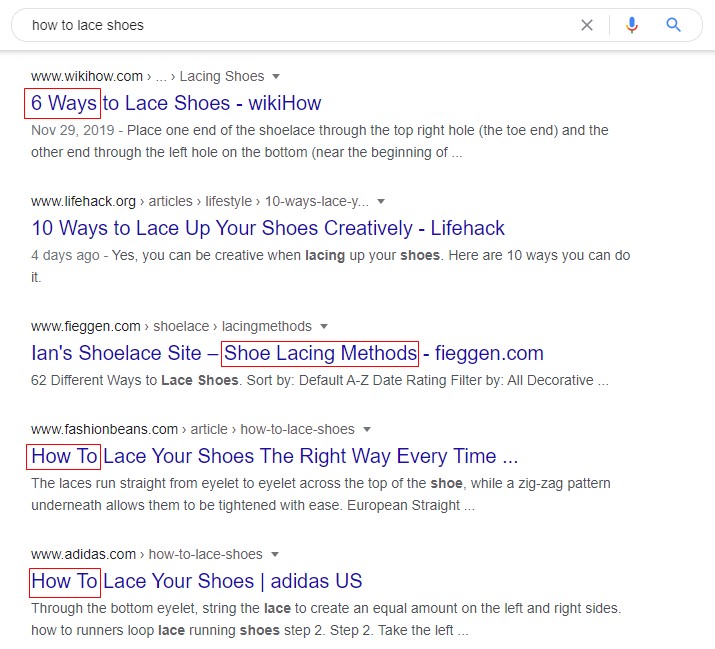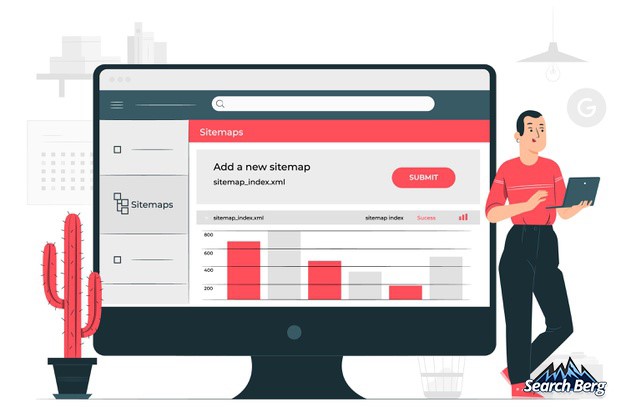8 Crucial Google Ranking Factors You Shouldn’t Ignore in 2020
As online marketing becomes the epicenter of running a modern business, there’s been a gradual departure from offline marketing strategies. While billboards, word-of-mouth, and television commercials may have done the trick in the last decade, they’ve lost their charm over the years.
Instead, search engines now dominate the marketing landscape.
This means that if your business doesn’t have a strong digital presence, it’ll quickly be swept away by the massive storm of competition.
Here’s the thing; maintaining an online presence doesn’t cut it. Instead, you have to go the extra mile and optimize your content to ensure it appears on the first search engine result page (SERP).
How do you go about this?
It’s simple. You familiarize yourself with the ins and outs of Google ranking factors.
If you’re new to rankings, check out our previous blog for a quick overview of local search ranking factors and essential on-page SEO ranking factors.
Once you’re done, head back to this blog and we’ll walk you through some of the most crucial Google ranking factors for 2020.
1. High-Quality Backlinks

There’s a reason why the term “backlinks” has become a household name in the SEO world. Whether you recently launched a startup or have been running a business for over a decade, leveraging backlinks is a surefire way to increase online visibility.
A backlink is an external hyperlink that redirects readers of a third-party website to your content (product pages/services pages/blogs/articles, etc.).
In short, it’s a goldmine for businesses that are struggling to appear on the first page of Google.
The process of acquiring backlinks is commonly known as “link building.” Lucky for you, we have a video detailing just that!
Sounds like the perfect way to ensure your business dominates search results, right?
Well, there’s a catch.
While link building definitely plays a big role in boosting SERP rankings, it’s not a one-size-fits-all strategy that can be leveraged to produce the same results.
There are many nuances that need to be mastered before you can sneak your way into the top search results on Google.
For starters, you need to make sure that you’re receiving backlinks from websites with high domain authority, i.e. stellar ranking on SERPs. The score ranges from 1–100 and gives Google an idea of how reputable, trustworthy, and authoritative your website is.
Google’s algorithm works assiduously to analyze multiple on-page factors and determine where you stand.
For instance, Forbes has a domain authority score of 93. The higher the rating, the better.

If you receive a dofollow backlink from an established and trusted website like Forbes, you’ve struck gold. Not only will you receive an influx of high-quality traffic, but Google’s algorithm will also give you a much-needed boost in rankings.
And while backlink quality matters, backlink quantity is equally essential. Master the art of consistent link building so you can claim and retain your spot on the first SERP.
2. Search Intent
Google’s ranking algorithm is whip-smart. It cleverly ranks pages based on search intent.
For instance, if you’re looking to purchase shoes online in Miami, the algorithm will detect that you’re in “buying mode” right off the bat. Instead of receiving a cluster of different search results that leave you flustered, you’ll view a streamlined set of relevant pages.
Here’s a glimpse:

Notice how each page is tailored for web users who are in “buying mode” and interested in making a transaction.
Alternatively, if someone was interested in learning how to lace shoes, the algorithm would quickly pick up on that and offer results for web users in “learning mode”:

Each result includes the phrases “how to,” “ways,” or “methods” to help readers learn, as opposed to buy.
Of course, the page may include a clever call-to-action toward the end that prompts action. However, that’s not the main concern of the reader, and Google knows that.
As a marketer, you need to understand this distinction and create content accordingly.
Optimizing your page for search intent will ultimately help your business become a familiar sight on the first SERP. If you run a local business, you’ll manage to break into the coveted Google Local 3-Pack.
Here are some of the most effective local SEO strategies for small businesses to help you master the art of creating and optimizing content for local search.
3. Winning Content That Consistently Stands Out

Ah, content. We doubt there will ever be a day when content isn’t one of the (if not “the”) best ways to rank higher on Google.
As we segue into the importance of producing winning content, it’s essential to note that search intent closely ties in with this ranking factor.
After all, you’re producing content for customers.
Throwing intent out of the mix will leave you with content that fails to achieve its purpose. Instead, keep a laser-sharp focus on what your audience wants and go the extra mile to supply it.
We suggest using Google Trends for staying abreast of the latest news updates, events, and happenings that are currently trending. Create content plans around these trends to give your audience exactly what they’re actively searching for.
In addition, create personalized pages for different demographics (e.g. age, location, etc.).
If you run a local clothing store in Arizona, it’s very likely that your target audience will run searches similar to “trendy clothes in Arizona,” “summer outfit trends Arizona,” “stunning outfits for teens Arizona.” Create a customized page for all major subsets of search intent.
Covering all bases will help your website actively circulate the web and appear in the results for hyper-specific search queries.
4. Expert Keyword Research and Use

Even if you’re not a seasoned SEO pro and have been casually dabbling in the digital marketing landscape, we’re sure you’re still familiar with the make-it-or-break-it nature of keywords.
To cut to the chase, keywords have been long placed on the golden pedestal of SEO—and rightfully so. Expert keyword research can boost content from the 6th page of SERPs to the first.
But how should you go about it?
We recommend getting in touch with keyword specialists who have extensive experience in researching relevant keywords for a wide range of industries. They’ll equip you with the top-ranking keywords in your niche so your content stands out instead of simply floating across odd SERPs on the web.
In addition, focus on incorporating the following keywords into your content:
- Short-Tail Keywords: Short keywords comprising 2–3 words
- Long-Tail Keywords: Long and specific keywords comprising over 3 words
- Geo-Targeting Keywords: Keywords that target a specific location (e.g. neighborhood, town, city, state, country, etc.)
- LSI (Latent Semantic Indexing) Keywords: Conceptual terms that are closely related to the main keyword
Use anchor text for your keywords, wherever possible, to ensure they stand out and prompt action. This is a great way to boost rankings and compel web users to invest in your products/services, engage with earlier content, or simply stick around longer!
Incorporate keyword-rich anchor text within the first 100 words of your content to increase your chances of appearing on the first SERP. Also known as keyword prominence, this nifty strategy will help your content rank higher.
In addition, be careful about keyword density to avoid going overboard and potentially getting penalized by Google. Keyword density is the percentage of keywords used as a factor of the total words appearing on the page.
For instance, if you write a 500-word blog and include 5 keywords, your keyword density is 1%. Ideally, we suggest opting for 2–4% keyword density to ensure your content appears on SERPs without risking the chance of overwhelming your audience or getting blacklisted.
Using white hat keyword research and use strategies is a great way to find the perfect balance.
Lastly, pay close attention to keyword proximity. This factor refers to the distance between each keyword.
Let’s say your keyword is “Los Angeles residential doors” and you incorporate it into your content as “Los Angeles doors for all your residential needs.”
The search term proximity between “Los Angeles” and “doors” is excellent since there are no interruptive words in between. However, the search term proximity between “doors” and “residential” is three words, which isn’t great.

Using keywords as they are as much as possible will help your website dominate the web!
5. A Secure and Accessible Website

Your website’s structure, design, and functionality go a long way in helping Google’s algorithm effectively crawl, index, and rank your page(s).
Google has revealed on numerous occasions that the platform uses HTTPS as a ranking signal. In fact, Google’s Webmaster Trend Analyst, John Mueller, tweeted the importance of HTTPS by stating that it’s a “lightweight ranking factor [and has] great user for users.”
Our team at Search Berg couldn’t agree more.
Set up SSL on your website by getting in touch with an expert web development team.
In addition, incorporate the following tips into your web design and development strategy to boost rankings:
- Use an SEO-friendly URL and always separate terms using hyphens (not underscores)
- Opt for responsive, visually compelling, and user-friendly web design that enhances user experience and pulls in quality traffic
- Ensure seamless navigation to ensure web users can find what they’re looking for
- Don’t use JavaScript excessively
- Create a sitemap
- Improve your page load time
6. Mobile-Friendliness

- 70% of all internet traffic comes from smartphones
- 46% of web users state that they wouldn’t purchase from a brand again if they had an unpleasant mobile experience
- Over 80% of people are more likely to purchase from businesses with a responsive and interactive mobile website
In short, ensuring mobile-friendliness is non-negotiable in 2020.
While you may have checked off all the boxes by creating a seamless and aesthetically pleasing desktop website, you’re sabotaging your business by sidelining mobile-friendliness.
In 2016, Google announced mobile-first indexing, which meant that a website’s compatibility (or lack thereof) with mobile would directly impact its rankings.
Previously, businesses would prioritize desktop web design and development.
Today, many businesses kick-start their online marketing projects by creating a seamless, user-friendly, and engaging mobile website.
If you haven’t yet, you may want to jump on the bandwagon stat.
Determine your site’s mobile-friendliness by checking the “Mobile Usability” report in Google Search Console. If things aren’t looking so good, you’ll have to make some major changes.
If you already have a mobile-friendly website, you can still use the platform to detect any issues and resolve them on an urgent basis.
We recommend ensuring each page on your site is perfectly optimized for mobile to prevent customer loss, especially if you run a local business.
7. Schema Markup
Using schema markup, also known as schema code, is a great way to rank higher on Google. Needless to say, it’s one of the top ranking factors for 2020.
In short, schema markup informs search engines of the kind of content you’re producing. It helps them effectively understand certain information, including your company’s phone number, reviews, address, etc.
As one of the most effective small business SEO strategies, schema markup plays a big role in allowing search engines to fetch accurate and more informative results for web users.
Ensure your data markup is consistent with the guidelines set by Google.
At Search Berg, we have the resources, expertise, and experience to help your business rank higher by implementing a site-wide schema code.
8. Domain Authority and Seniority

While we touched upon domain authority when outlining the importance of high-quality backlinks, we strictly discussed it with regard to link building.
Of course, ensuring you receive backlinks from a website with high domain authority is essential. However, it’s equally important to ensure your website has high domain authority.

Over the years, domain seniority has also emerged as a crucial ranking factor. The older your domain is, the better chance you have at tapping into the first SERP.
You may have noticed that domains that have been around for quite some time end up holding a coveted position on the first page of Google for much, much longer. In contrast, new domains struggle to rank for top keywords.
While you can improve your domain authority, there’s nothing you can do about domain seniority except wait, continue to produce powerful content, and let nature take its course.
In the meantime, here’s how you can increase your domain authority.
Struggling to rank higher on Google? We can help you get started. Our local SEO and link building specialist are equipped with the insights, resources, expertise, and experience required to help turn your business around.
We focus on a wide range of Google ranking factors, local search ranking factors, link building services and on-page SEO ranking factors to ensure your business climbs SERPs and lands in the Google Local 3-Pack.














